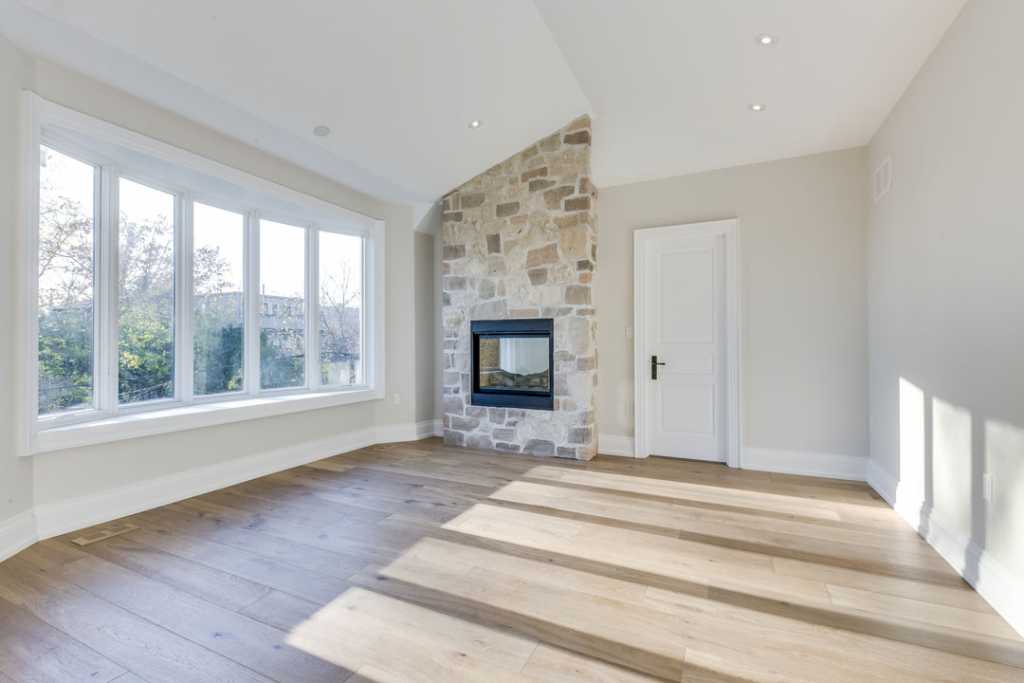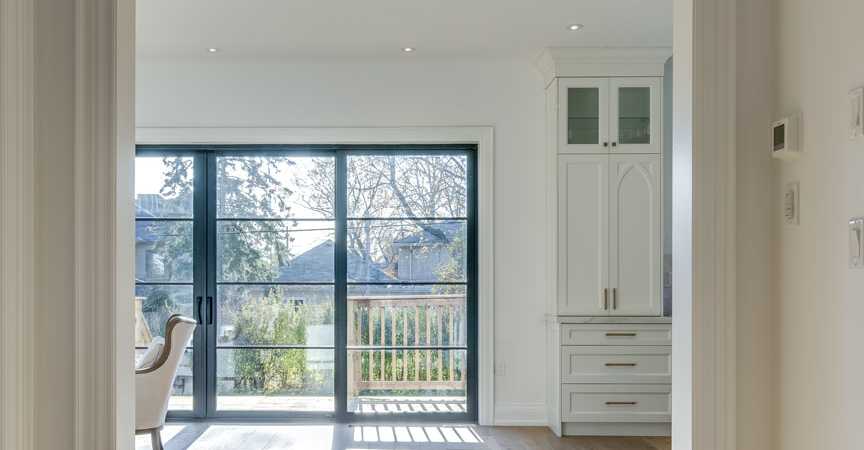If you’re ready to transform your home with a sunlit oasis, you may want to consider adding a sunroom. A custom-built sunroom is a great way to increase the living space in your home while allowing you to enjoy the beauty of the outdoors all year round. This makes them particularly popular in cooler climates, giving homeowners a warm and cozy place to relax and unwind. A sunroom is also a cost-effective way to expand space in your home without having to do a full room addition which can be significantly more expensive.

What is a sunroom?
A sunroom is more than just glass walls, it is a dedicated space to enjoy your favorite indoor activities while enjoying your outdoor surroundings. A sunroom allows you to choose the amount of sun exposure you want, whether it be minimal or as much as 80 percent.
Most sunrooms can be customized to make it a fully functioning addition to your home. This can include electrical services and heating and cooling so you can enjoy it all year round. Your contract will be able to provide you with design options that suit your specific lifestyle and design needs. Most sunrooms are built on a floating concrete slab with a perimeter foundation so that there is a stable base for the sunroom.

Stick-Built Additions
There are a variety of sunroom design options that allow you to maximize comfort and enjoyment. One of the most common designs is stick-built which refers to structures that are built from scratch. This can include home additions, room additions, or bump-outs. They are constructed using wood, concrete, singles and glass, and other traditional home building materials.
A stick-built structure may have a basement, but this is not the case with sunrooms. They can also have electricity and other services added to make them a seamless addition to your home.

Prefab vs. Custom-Built Sunrooms
Pre-fab sunrooms take the stress out of having to come up with a design. They also expedite the construction process because they are built from prefabricated kits that include steel, aluminum, and fiberglass. They also include panels of glass that will surround the sunroom. Not only that but they are assembled with the assistance of a qualified sunroom installation technician. This is the best way to ensure it meets all building codes and guidelines. The sunroom is built off-site to the manufacturer’s specifications and then brought in ready to be installed by the contractor.
Custom-built sunrooms allow homeowners more flexibility and input when it comes to design. Custom-built sunrooms have studs, and truss framing paired with shingle or glass roofs that create the classic sunlit setting. They may also have custom full-length windows and doors that allow for easy transition between the interior and exterior of your home.

Cost of sunroom
The cost of a sunroom varies based on materials and construction. Most custom sunrooms start at around $8,000 and can increase to upwards of $80,000 if they require a slab-on-grade foundation.
The general rule is to consider a sunroom that is approximately 15 by 15 feet in size. This would usually be about $17,000 to construct. Aluminum and glass kits are slightly more expensive, averaging around $24,000. If you want your sunroom to be usable year-round, then you will want to add finished walls and wiring, which will increase the cost to between $24,000 and $36,000. It’s also important to consider any labour or material costs to customize your sunroom.
Types of Sunroom Additions
Sunrooms are incredibly versatile spaces with a wide range of customization opportunities. The type of sunroom you choose to build will depend on your home’s layout, your goals, and your design preferences. Designing the perfect sunroom starts by exploring the characteristics, advantages, and disadvantages of the different sunroom types and styles.
Here’s a list of the various sunroom additions we can create at Black Pearl Custom Homes, including a few pros and cons of each:

3-Season Sunroom Additions
A 3-season sunroom is typically enclosed with glass. This includes floor-to-ceiling windows, screens, and doors. As a result, 3-season sunrooms have excellent airflow and natural lighting, which makes the space more comfortable throughout the spring, summer, and fall. In contrast to a 4-season room, a 3-season sunroom isn’t connected to the home’s central HVAC system and has little or no insulation. These sunrooms make the perfect plant rooms, reading nooks, and sitting areas.
| Pros | Cons |
|---|---|
|
|

4-Season Sunroom Additions
A 4-season sunroom can be enjoyed throughout the winter, spring, summer, and fall. It has insulation and is connected to the home’s HVAC system. Additionally, many 4-season sunrooms feature double-pane glass windows and solid roofs for improved temperature control. As the sunroom stays warm in the winter and cool in the summer, you can use the space year-round for a multitude of purposes. Spend summer nights playing board games under the stars, snuggle up with a book and a hot chocolate in the winter, or watch the sunrise on crisp fall morning from the comfort of a cozy sofa.
| Pros | Cons |
|---|---|
|
|

Patio Enclosure
A patio enclosure shelters your deck from the wind and rain with insulated windows. Rather than building a new foundation as you would a traditional sunroom, patio enclosures are built around an existing structure. These types of sunrooms are a great budget-friendly option that requires minimal construction. You can use this new space as a summer or spring dining area or simply use it to enjoy the outdoors without dealing with mosquitos, cold breezes, or rain.
| Pros | Cons |
|---|---|
|
|

Screen Rooms
Screen rooms have metal frames and floor-to-ceiling mesh screens rather than dry wall and windows. Because the screens provide protection against insects, such as bees and mosquitoes, these sunrooms are excellent spaces for relaxing in the summer and spring seasons. However, as screen rooms lack sufficient protection against extreme weather, such as high winds and freezing temperatures, they’re less suitable for fall and winter use. Screen rooms can be filled with comfortable furniture, bookcases, game tables, plants, and electronics, such as televisions.
| Pros | Cons |
|---|---|
|
|

Pool Enclosures
In contrast to sunroom enclosures, a pool enclosure shelters your pool rather than a room or patio attached to your home. This allows you to use your outdoor pool later into the season as it protects it from rain, snow, and debris such as leaves and twigs. There are various types of pool enclosures, including partial or full enclosures, as well as glass or screen enclosures. Full enclosures have a roof, four walls, and a door, whereas partial enclosures have a roof and three walls, with an opening instead of a door.
| Pros | Cons |
|---|---|
|
|

Solariums
A solarium can be a freestanding or attached sunroom addition. They’re typically built with beams and a metal frame and feature a glass roof and either glass panel wall or floor-to-ceiling windows. This maximizes natural lighting, making the sunroom feel more spacious. However, glass enclosures can pose more challenges with temperature control and have reduced privacy. Solariums make ideal greenrooms for plants that require plenty of sunlight. You can also use solariums as lounge spaces on summer days or nights as well as reading rooms in the spring and fall.
| Pros | Cons |
|---|---|
|
|

Additional Considerations
A house with a sunroom is a great selling feature for potential buyers, but there are other important things to consider when putting together your construction plans.
Heating and Cooling – the installation of an HVAC system isn’t required, however, it can be an added bonus if you want to use your sunroom year-round.
Electrical Service – Sunrooms are not required to have electricity, however, it may be a great addition to your sunroom if you want to use it as a more formal living space.
Construction vs. Resale – You want to be sure that you are getting the maximum return on investment with your new sunroom. Make sure to consider the overall value of your property and factor whether this is a wise investment.
Contact Us
A sunroom addition is a perfect way to create an elegant and sunlit room in your home for reading, entertaining and relaxing. A sunroom extension is also an affordable and practical way to improve the look and value of your home. Black Pearl Custom Homes can help you create the perfect sunroom. Our team of experts will work with you from design to final finishes. Contact us today for a free consultation.

